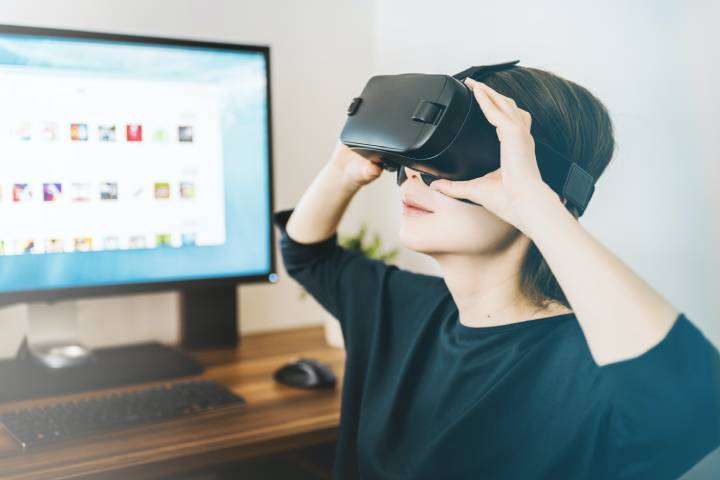The young virtual reality market has shown a decline in 2020 marked by the multiple impacts of the pandemic crisis. But according to TRC, this is only to bounce back better in the coming years.
Table of Contents
What Is Virtual Reality?
Virtual Reality (VR) means an artificial reality created by special hardware and software. Experts also call them synthetic worlds. This is a computer-generated three-dimensional space that is designed to offer people new visual possibilities.
VR describes the technology behind this experience. A visit to bygone cultures, a tour of a new house: VR enables the user to experience a computer-generated, interactive virtual environment in real-time.
To do this, the user has to wear a VR helmet or glasses, usually with headphones. He controls what is experienced through movement. Sensors translate this movement. There are practically no limits to the virtual environment.
The development of VR technologies began in the 90s. The first successful products for virtual reality in the video game industry were the Wii remote control and the Move / Eye play stations. These can depict the gestures and movements of the player on the game console. There are currently two classes of VR devices on the market:
High-end headsets such as the Oculus Rift or the HTC Vive, which was co-designed by the game developer Valve, can be connected to a conventional PC.
Mobile headsets such as Google Daydream, Samsung GearVR, or the cardboard Google Cardboard, which are significantly cheaper and work with smartphones.
The virtual reality market is less dynamic than expected. In particular, because the technology, relatively expensive for quality helmets, has difficulty in attracting large public and that the “general public” applications are for the moment limited. Professional uses ultimately remain the main driver of this technology for the moment.
Due To the Pandemic The mainstream market has been affected much more than the professional market and is driving the entire VR market down and negative trends. This drop in the market can be explained in particular by a significant drop in sales of the PlayStation VR headset. Yet the video game market exploded during the months of confinement. And the latter could have been conducive to a very strong upturn in sales of VR gaming headsets on PCs as consoles. But the “hardcore” gamers in the Sony universe are now waiting for the PS5 and no longer investing in PS4 technologies.
Virtual Reality: Hype or Opportunity?
A neurosurgeon inspects a 3D model of the brain and prepares in detail for the operation. An IT specialist examines a complex piston pump from the inside. A young man balances on a rope across a ravine. There are countless scenarios that can be experienced in virtual reality or VR for short. The technology is used in medicine, psychology, and the automotive industry. Individual cases? Or real change? How much potential there is really in the application.
Is Augmented Reality the same as Virtual Reality?
Only in part. Augmented Reality (AR) is about an expanded digital perception of reality. So it’s not a completely virtual world. In addition to the current recordings of the outside world, additional information on individual objects is blended into the user’s field of vision. These can be images, videos, or texts that give the user additional information.
Example: The AR game “Pokemon Go” from Nintendo. The player goes on a virtual monster hunt with his smartphone camera and still remains in his real environment. The 3D monsters are added correctly in perspective. It is always important to have an interaction between the user and the additional information. If the software only fades in the data, it is not augmented reality.
Read More: What Exactly Mean By Augmented Reality & Virtual Reality
Which industries are already using virtual reality?
The areas of application are diverse: Virtual visualizations can be found in architecture, medicine, chemistry, energy, or education. The pilot training in flight simulators is particularly well known. In industry, the technology is used to create virtual prototypes, to plan productions, or for virtual training.
VR technologies are used, for example, by the US company Walmart to train its employees. The US ski team also uses VR technology for training. Companies with industrial assembly line production use highly specialized data glasses to call up information on the status or sources of error.
In the automotive industry, there are already complex simulations and technologies for the visualization of products and designs. Some companies also use entertaining elements of games in non-game contexts (gamification) in the field of marketing or to enrich the media.
Spatial simulations in geology are suitable for planning infrastructure measures that change the landscape. The environment feels so real that the user can not only see but also experience what changes as a result of a project.
The entertainment industry already has fitness equipment with VR support and simulators that enable virtual flights over cities. Under the umbrella term virtual rehabilitation, researchers are investigating the therapeutic use of virtual reality.

